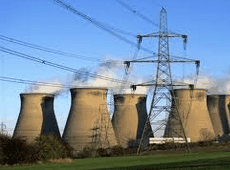
Cross-posted from The Conversation
Let’s be honest: the relationship between renewable energy and the electricity market is complex. So what does the latest report from Australian energy research firm RepuTex tell us?
Well, for a start, coal-fired power has reached a ten-year low.
The report, widely covered in the media, shows coal now makes up 74.8% of the National Electricity Market (NEM), down from 85.8% in 2008-2009.
At the same time the contribution of other energy, and renewable energy in particular, has risen. Hydro power makes up 8.7% of the market, with wind making up 3.8%, both record highs for these energy sources. This leads to the conclusion that greenhouse emissions in the NEM have also reached a ten-year low.
The RepuTex report indicates that both increased renewable energy generation and weaker demand is putting a “squeeze” on traditional generation.
This is ultimately reducing the market price of electricity as renewable energy competes with coal and other traditional energy sources. But, as said, the relationship between renewable energy, competition and market prices is complex.
Does renewable energy lower prices?
In 2011 the Victorian Auditor-General reported that the brown coal industry was concerned that the 10% renewable energy target would deliver too much too quickly which would reduce wholesale electricity prices and impact on brown coal generators.
We looked back and modelled the hypothetical impact of distributed solar photovoltaics (PV) on electricity prices in 2009 and 2010. Lowering the wholesale cost of electricity might offset the costs of renewable energy support schemes.
Using the model we estimated introducing 5,000 megawatts (MW) of solar would lower the market price of electricity by more than A$1.8 billion over 2009 and 2010. When we completed this analysis there was a minuscule 385 MW of solar in the electricity market. Now there is already 2,500 MW, making our estimate look conservative.
The Australian Energy Market Operator (AEMO) forecasts 12,000 MW to be installed by 2030 in their “moderate” scenario. The impact of PV on market demand is already starting to show on the market.
The average wholesale electricity prices for 2011-12 were the lowest (in real terms) since the market commenced in 1998. Even with the carbon tax, prices are not much above the long-term average of about A$50 per megawatt hour (adjusted to 2013 dollar terms). Recently, the Australian Energy Regulator (AER) reported that wind generation is moderating wholesale electricity prices in South Australia, and when there is less wind, prices are higher.
Merit order effect
The reason has a lot to do with an interaction called the “merit order effect”.
In our electricity market, energy is offered into the market by generators on a five minute basis. Each generator, or source of electricity, is used according to cost, with lowest cost being used first. This sometimes called a “merit order” dispatch system.
Low-cost electricity generators, including renewable sources such as wind and coal, are used before high-cost generators like peak gas turbines. Price is determined by cost of fuel and operating costs. The last generator used in each five minute block to meet demand sets the price.
If new low-cost generators are added, like renewables with no fuel costs, it alters the “merit order”. High-cost generators may then not need to be used, resulting in lower prices. Personal or household (distributed) renewables like rooftop solar photovoltaics (PV) can have the same effect on merit order.
However, the merit order effect can’t last forever. Theoretically supply and demand should eventually balance, as demand grows and old generators close. However, with another 8,000 MW of wind capacity projected to be installed by 2020 and another 10,000 MW of solar PV by 2030 it is easy to envisage a scenario where wholesale prices stay low for a long time.
Will prices be passed on to customers?
Renewables and distributed PV are not the only thing affecting merit order and the wholesale electricity market.
As the Queensland Competition Authority (QCA) recently noted, the merit order effect is not just due to solar generators.
It is the result of a number of different influences from both the supply and demand side. Economic conditions influence industrial demand; households are increasingly using their own solar; and customers are adopting energy efficient measures. It can be difficult to distinguish between these factors.
Even assuming a fully competitive market, participants need to manage risk and exposure to volatile wholesale price. Even if market prices drop when renewable energy is introduced, more sophisticated market modelling suggests distributed renewable generation actually reduced market volatility.
In a competitive market, lower wholesale prices are completely foreseeable. What is less clear is whether, and to what extent, these prices will be passed on to customers.
This depends largely on the electricity generator’s hedging and contracting arrangements, and market behaviour, among a myriad of other factors.
Some argue that price reductions will flow through to consumers and eventually lower electricity prices.
Others argue that the oligopolistic behaviour displayed in electricity markets will erode competition and the merit order effect, preventing it being passed on to consumers.
Article by Dylan McConnell, Research Fellow at University of Melbourne

